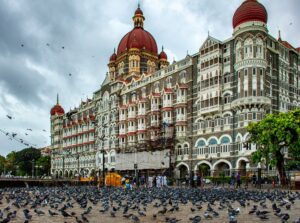
India is a land of incredible biodiversity. From the snow-clad peaks of the Himalayas to the lush Western Ghats and the vast deserts of Rajasthan to the mangroves of the Sundarbans, the country is home to a rich variety of flora and fauna. Wildlife sanctuaries & national parks play a critical role in preserving this natural heritage and are among the most popular destinations for eco-tourists, wildlife lovers, and photographers alike.
With over 100 national parks and more than 500 wildlife sanctuaries, India offers some of the best opportunities in the world to see exotic animals, rare birds, and breathtaking landscapes.
What Are Wildlife Sanctuaries & National Parks?
Wildlife sanctuaries are protected areas where animals live freely without human interference. These regions may allow limited human activity like tourism and research, provided it doesn’t harm the ecosystem. National parks, on the other hand, are more strictly regulated. They are protected under the Wildlife Protection Act of 1972 and focus on preserving the habitat and wildlife with minimal human disturbance.
Both types of reserves are essential for:
- Conservation of endangered species
- Supporting biodiversity
- Promoting environmental awareness
- Offering sustainable tourism opportunities
Top National Parks in India
- Jim Corbett National Park (Uttarakhand)
Established in 1936, this is India’s first national park and a haven for Bengal tigers. Its riverine terrain, dense forests, and grasslands make it a must-visit for wildlife enthusiasts. - Kaziranga National Park (Assam)
A UNESCO World Heritage Site, Kaziranga is famed for its population of the one-horned rhinoceros. It also shelters tigers, elephants, wild water buffalo, and numerous bird species. - Sundarbans National Park (West Bengal)
Known for its mangrove forests and elusive Royal Bengal tigers, the Sundarbans are a unique ecosystem where land and water meet. Boat safaris offer a different experience from conventional jeep rides. - Ranthambore National Park (Rajasthan)
This park combines wildlife with history. Its tigers roam freely around ancient ruins and lakes, providing dramatic backdrops for photography. - Bandhavgarh & Kanha National Parks (Madhya Pradesh)
Bandhavgarh has the highest density of tigers in India, while Kanha inspired Rudyard Kipling’s The Jungle Book. Both offer scenic forests and excellent chances of spotting big cats.
Popular Wildlife Sanctuaries in India
- Periyar Wildlife Sanctuary (Kerala)
Located in the Western Ghats, this sanctuary is known for its elephants, scenic lake, and birdlife. Bamboo rafting and boat cruises are key attractions here. - Bharatpur Bird Sanctuary / Keoladeo National Park (Rajasthan)
A UNESCO site and a paradise for bird watchers, especially during winter when migratory birds arrive in huge numbers. - Dachigam Wildlife Sanctuary (Jammu & Kashmir)
Famous for the endangered Hangul (Kashmir stag), Dachigam’s alpine scenery is as much an attraction as its rare species. - Chilika Wildlife Sanctuary (Odisha)
Surrounding Asia’s largest brackish water lagoon, this sanctuary is home to flamingos, dolphins, and countless migratory birds. - Cotigao Wildlife Sanctuary (Goa)
Less crowded than Goa’s beaches, this lush forest is rich in biodiversity and perfect for a peaceful nature retreat.
Why Visit Wildlife Sanctuaries & National Parks?
- Close Encounters with Nature: See tigers, leopards, elephants, deer, birds, and reptiles in their natural habitats.
- Photography Opportunities: Capture stunning landscapes and animal behavior in real-time.
- Educational Value: Learn about ecosystems, conservation efforts, and local communities.
- Adventure & Relaxation: Safaris, nature trails, and eco-resorts offer both thrills and peace.
Best Time to Visit
- October to March: Ideal for most parks due to pleasant weather and better animal visibility.
- April to June: Best time to spot wildlife near water sources, especially tigers.
- Monsoon (July–September): Many parks are closed, but some southern sanctuaries like Periyar remain open and lush.
Types of Wildlife Experiences
- Jeep Safaris: Common in parks like Ranthambore, Bandhavgarh, and Corbett.
- Boat Safaris: Offered in Periyar, Sundarbans, and Chilika Lake.
- Walking Trails: Available in smaller sanctuaries like Cotigao or Satpura.
- Birdwatching Tours: Especially rewarding in Bharatpur, Chilika, and Ranganathittu Bird Sanctuary.
Responsible Tourism Tips
- Never feed or disturb animals.
- Avoid using plastic and dispose of waste responsibly.
- Follow park rules and respect local customs.
- Choose certified eco-lodges and ethical tour operators.
- Maintain silence and do not play loud music inside forests.
Government Initiatives & Conservation Efforts
The Indian government, through the Ministry of Environment, Forest and Climate Change, runs several programs such as:
- Project Tiger: To protect Bengal tigers.
- Project Elephant: Focused on elephant conservation.
- Eco-Development Committees: Involving local communities in tourism and conservation.
These efforts have played a significant role in increasing wildlife populations and spreading awareness about sustainable tourism.
Conclusion
Wildlife sanctuaries & national parks in India are not just about thrilling safaris—they are sacred spaces where the planet’s wild spirit still thrives. Visiting these places nurtures a deeper respect for nature, supports conservation, and offers memories that last a lifetime. Whether you’re watching a tiger prowl in the misty dawn or listening to birdsong at sunset, every moment in the wild is magical.








